Almost two years ago I recorded a podcast with Tomás Mandl on his book Modern Paraguay: Uncovering South America's Best Kept Secret. If you have been following me since then you might already know that Friedrich Nietzsche’s sister moved to Paraguay with her husband to start a new German Colony to advance Nazi ambitions of Aryan supremacy. Perhaps, you already know that Alfredo Stroessner, the military dictator of Paraguay for 35 years (the longest Western Hemisphere Cold War dictator apart from Fidel Castro), gave Paraguayan citizenship to Josef Mengele, the infamous Nazi war criminal (“Angel of Death” in Auschwitz) and refused to extradite him.
Yet, on my first visit to Asunción last week none of that was on my mind. What was striking was the total absence of any aesthetic coherence of the city.
In a previous post, I talked about what I consider the spectrum of the Deepness of cities. In my view, cities can be economically developed but lack depth. Another mental model I use for my proxy of development when traveling is what I call aesthetic Coherence.
Trying to explain a mental model is always a bit fuzzy, but I mean something like this:
How well-planned does the urban design of the city feel?
How similar are the building designs in specific neighborhoods?
How well-marked and maintained are roads and pedestrian walkways?
How closely do street signs follow a specific design language?
In my mental model, a city like Madrid or St. Petersburg has high Coherence. But a city like Phnom Penh (Cambodia) or Kochi (India) has low Coherence.
If you walk around Phnom Penh or drive through Kochi, you will see a demure 1-story concrete building painted white next to an aggressively neon-lit 3-story building in brick and concrete with 4 different colors. Both were on a road without properly maintained pavement. This is a fairly common scene in developing countries in Asia. I am sure you have seen skyscrapers in Manila next to slums.
What this means is that private individuals can build however they please because there are no urban planning rules to follow, nor any government-imposed development master plan. We can argue how good or bad this is, I am just pointing out it is something you see.
What was surprising to me is how closer Asunción is to the southeast asian side of Coherence. I did not expect Asunción to remind me so much of Phnom Penh.
This was the view from my hotel room. It was actually (one of?) the nicest hotels in the city. The building itself, inside and outside, was quite elegant. I even found out that the King of Spain and the President of Panama recently stayed there. If you know me, this is apt indeed.
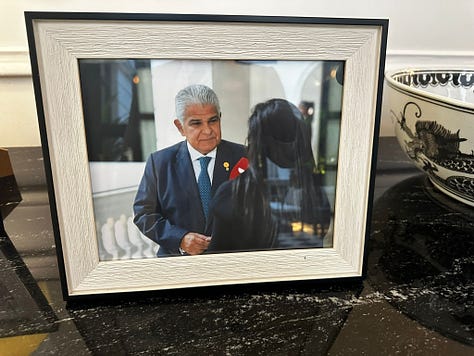
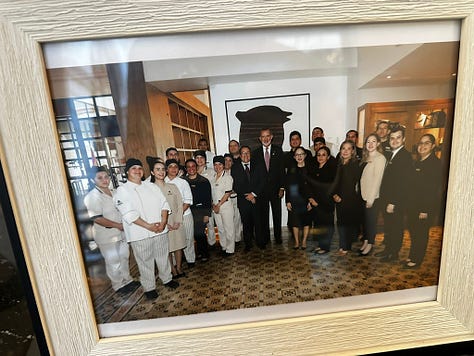
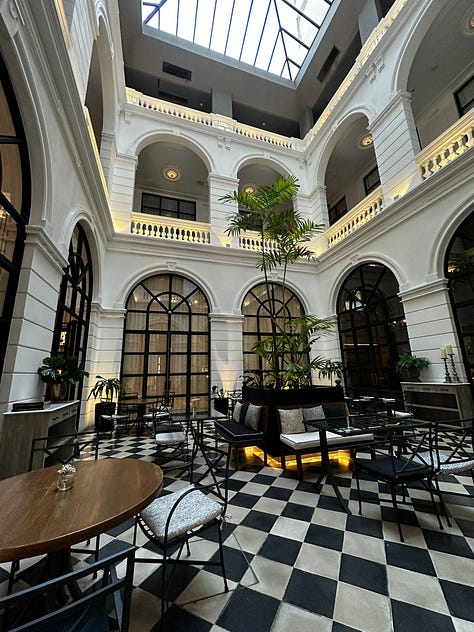
But it goes to show how even the nicest buildings in Asunción are usually just surrounded by dilapidated ones.
This is a common detail everywhere around the downtown areas. There is no real urban planning; private investors just build where they see fit. This dire lack of system-wide (public sector-led) urban planning could be seen in the fact that, generally, the government of Paraguay spends way less than any other Latin American country.
Problems with a Lean State?
As a percentage of GDP, government expenditure in Paraguay is around 19%, which is way below the South American average of 29%. In fact it is the lowest. Interestingly it is similar to Cambodia, also at 19%.
Given the big image above, I did not expect the city to have so many modern high-rise buildings like these:
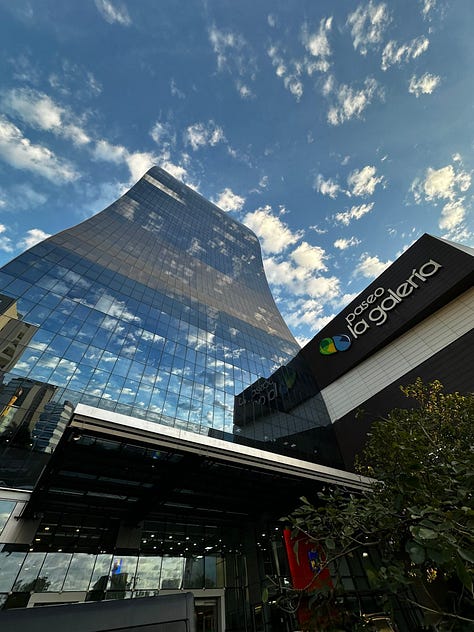
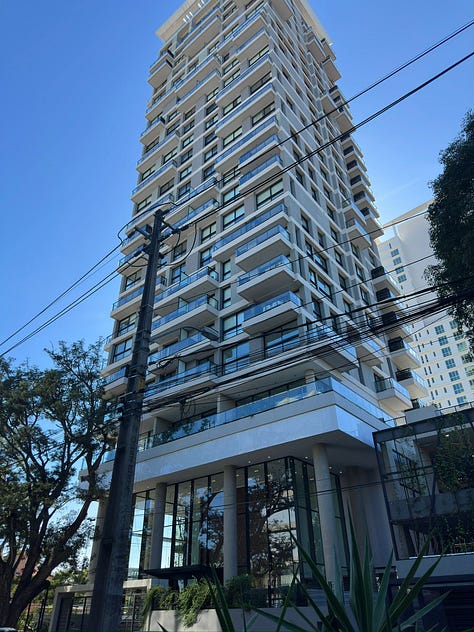

So why? Is it a strong and expanding middle class?
If you know anything about Cambodian urban development, you would guess no.
But let’s think about that.
With a population supposedly around 7 million, Paraguay’s per capita GDP (nominal) is just around $6,276 USD. And only around 15% of the population have a tertiary level of education.
From my podcast, or elsewhere, you might know that about 62%-67% of all jobs in the country are informal. Only Peru and Bolivia have higher rates of informal jobs. In fact this informality in the labour market, coupled with Paraguay’s extremely low tax capture policy, means that government revenue is heavily limited. In a population of around 7 million, only around 300,000 people file taxes and contribute to the government tax collection base. Why does only 7% of the country pay personal income taxes in Paraguay?
Firstly, similar to Panamá, Paraguay only taxes Paraguayan‑source income. So then, foreign salaries, dividends, or portfolio returns are generally exempt from domestic taxation. Curiously, personal income tax as a whole was only introduced in 2012.
Secondly, demographics. Of the 7M total population, around 3.5M (15-65 years old) are in the labour force. But given the high rate of informal labour (hence do not pay taxes or social security contributions), the active formal labour force is just about 1.2M people.
Thirdly, Paraguay has a tax gate. That is, only those persons making over $11,000 USD gross income annually even need to file taxes. So, given these details, the National Directorate of Tax Revenue in Paraguay has noted that only 296,691 people meet all of these criteria to file taxes. Are you surprised by this?
In terms of total tax revenue, personal income tax only accounts for 6%, while VAT accounts for 52%. Yet, the VAT rate is just 10%.
This means that Paraguay has the lowest VAT rate in Latin America. Well below Argentina (21%). This is a main reason why many Argentines and Brazilians travel to Paraguay simply to shop (usually for commercial purposes). This is deepened by the fact that there are two large Free Trade Zones near the borders with Argentina and Brazil. You will not find many leisure tourists in Asunción. When I spoke to Paraguayans, they often confirmed that it’s mostly Argentines and Brazilians who come to the city to buy products, not to explore and enjoy.
Going back to the middle class consumption point. If only around 300,000 Paraguayans make up the domestic personal income tax base then it’s perhaps not a local middle class that is buying and renting the new modern high rise apartments in Asunción.
Indeed, 70% of the new housing supply is acquired by foreign investors as a capital preservation strategy. They are not bought by locals. These are often investors from Argentina, who, according to some data, account for 70% of all foreign investors. They buy the apartments and then rent them out. But to who?
Usually, foreigners who go to Paraguay for work purposes or new residents who take advantage of Paraguay’s quick and easy residency scheme and citizenship program. And the fun part is that these rental contracts are usually in dollars! Not the local currency (the Guaraní, PYG). Of course, Argentines buy property in Paraguay and prefer to receive dollars in rent.
So there is another part to this. Yes, foreigners are buying more and more property in Asunción, but why is that property being developed there in the first place? This is not simply a matter of demand creating supply. There is an interesting story on the supply side, too.
Whose Incentives?
Paraguay has a special set of regulations established with Law 60/90, approved in 1990 with various amendments since then. The basic premise of this law is that for approved projects (which was updated to include real estate) over $5M USD, the developers are exempted from most taxes, including: 0% customs duty and 0% VAT on importing capital goods and on buying locally made capital equipment; 0% withholding tax on interest/commissions paid abroad and 0% tax on dividends & profits from the project for up to 10 years. Since 2024, the project baseline has been raised to an investment of at least $13M USD for these exemptions to kick in.
On top of all of these, if you build real estate buildings in Asunción specifically there are additional tax breaks from Municipal Ordinances on top of Law 60/90. So developers have really attractive incentives for building in Asunción and attracting foreign buyers. There are even some more tax breaks if you sell more than 40% of your building units on pre-sale.
All of this is why you have modern high rises near to roads like this in walking distance from the presidential offices. Low coherence.
There is a lot more that I could say about Paraguay. Like how the War of the Triple Alliance (1864-1870) resulted in the death of 70% of adult men in Paraguay, giving the country the highest male-mortality proportion ever reliably documented for a nation-state in modern warfare. Yet, the general population of Asunción is quite attractive. Or I could talk about why Paraguay has one of the largest Mennonite communities. Maybe on why it takes an ungodly amount of time to receive your food when you order it in any restaurant? Perhaps in another post.
If you do not speak Spanish then you will have a hard time doing anything. But if you do speak Spanish, the Paraguayan accent sounds phenomenal and the people are disarmingly kind.
Tyler once pointed out that a common question in Paraguay is “¿Con factura o sin factura?” I can now confirm that everywhere I went, I was asked this.



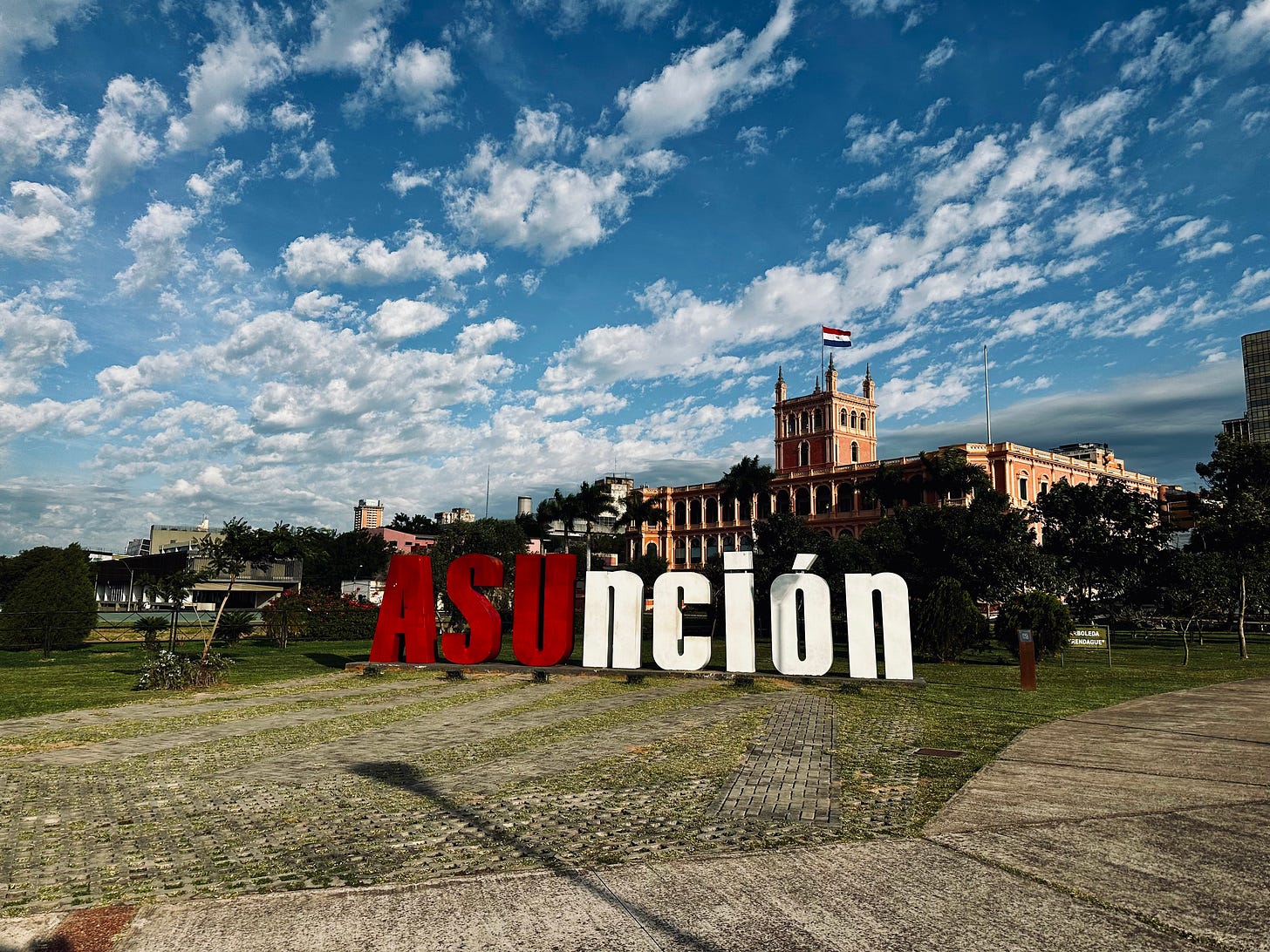
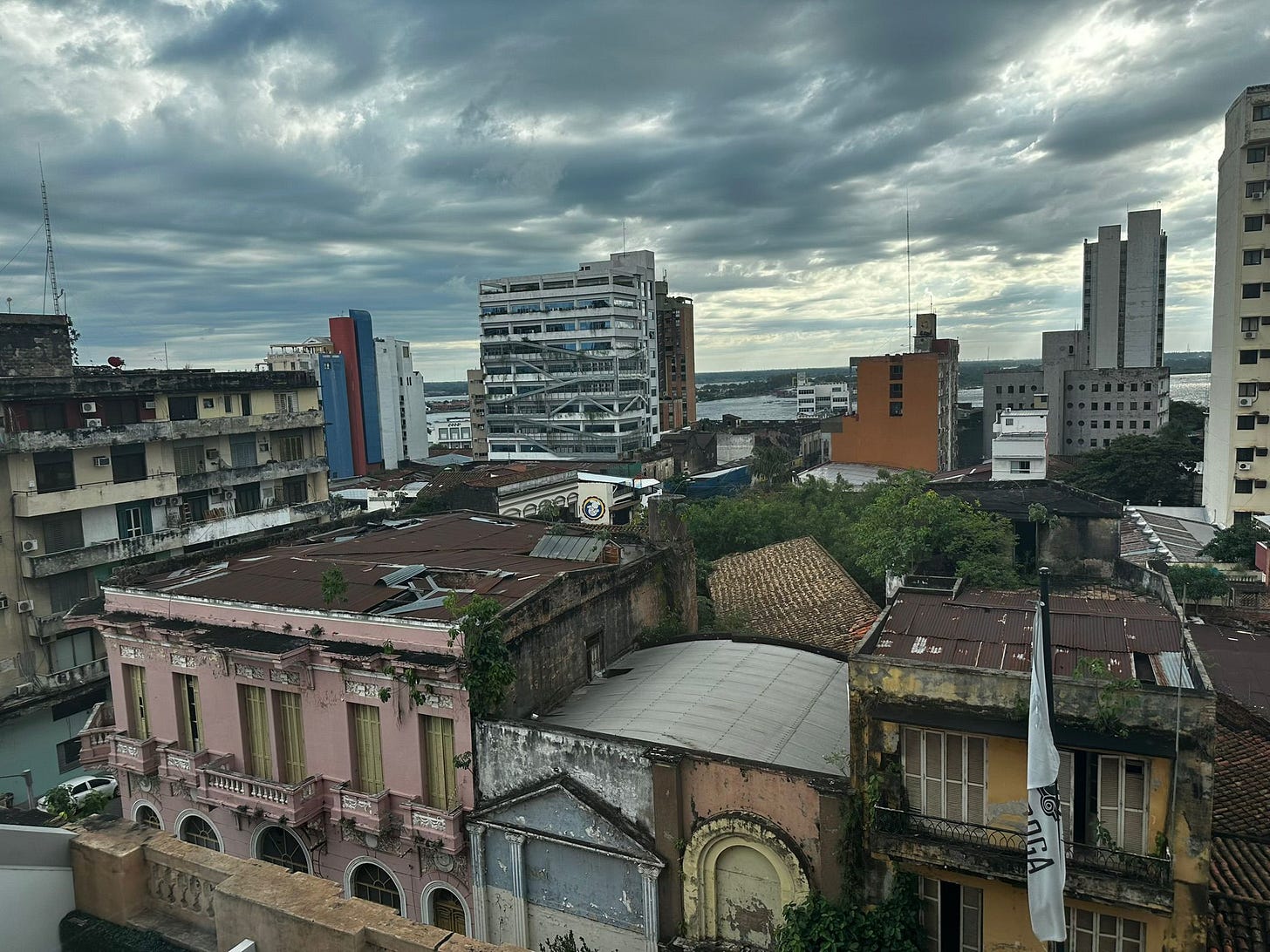
Paraguay, had a very small upper and middle class. But they are very consumer oriented and spend lavishly on parties and on their homes. It’s a land of contrasts for sure. As a person writing a book on consumerism and the middle class and upper classes in Paraguay during the Stroesser dictatorship a lot of the early modernization and architecture in Paraguay was built with hydro-cruzieros from Itaipu and it was during this era that consumption by the upper classes became quite ostentatious.
My father is an American expat living in Asuncion. Here is what he wrote as a reponse to this article:
"I agree with most of the opinions stated by the writer Rasheed Griffith. What his piece omits, I don’t think intentionally, is more facts regarding Paraguay’s history.
Paraguay, in its move towards independence, resulted in a bloodless coup from its Spanish administrators, unlike its neighbors. Its location and culture evolved uniquely different from the countries surrounding it. Two extremely ill-advised and devastating wars in the past 150 years have resulted in a very weird outlook. Countries like Brazil, Bolivia and Argentina did not exactly appreciate or understand Paraguay’s isolationist or(underdog) position.
Today, Paraguay has a rapidly growing middle class that has no intention in going backwards. Consumerism and technology have fed this movement for better or worse. Most of its exports are meat or plant based, with little real manufacturing in the mix, yet its economy and currency is stronger than its neighbors. It’s a country with lots of contradictions, and politics is only one aspect of everyday life here.
What is clear, is that there is no or very little appreciation for a (efficient) rules based society, be it professional certification, zoning planning and enforcement, judicial system and on and on. It doesn’t necessarily make life here unlivable, you just have to adapt your expectations to align with existing priorities.
Ironically, capitalism as practiced here, is much more honest than our (socialized) system, the nanny state, found in the USA and many parts of Europe. It is, for lack of better adjectives, the typical ‘patriarchal’ society.
As the article from Mr. Griffith would suggest, there seems to be an unhealthy opinion for existing buildings and infrastructure from yesteryear. My wife and some our students at Paraguay’s Central Bank have echoed this same sentiment. Foreign direct investment is not likely to be local, rather than from external sources. Paraguay as an import world citizen is not trapped in time, but trying to evolve and find its place in a shrinking world."